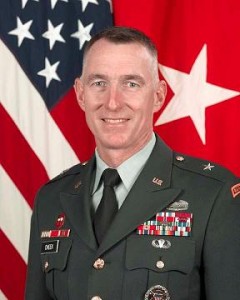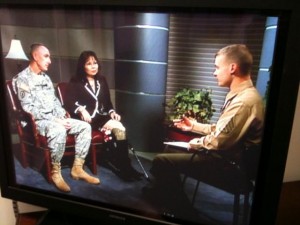By Pat Mackin, WTC Stratcom
The Army designated November 2009 as Warrior Care Month, an effort led by the U.S. Army Warrior Transition Command (WTC) to inform wounded, ill, and injured Soldiers, Veterans, and their Families about the transition assistance programs available to them during and after their assignment to one of the Army’s Warrior Transition Units (WTUs).
Throughout November, WTUs around the Army, as well as the U.S. Army Wounded Warrior Program (AW2) Advocates located across the United States, conducted a variety of local activities, such as job fairs and education seminars, to motivate wounded, ill, and injured Soldiers, Veterans, and their Families to take advantage of opportunities that promote a successful transition back to duty or into civilian life as a productive Veteran. The theme of the Army’s Warrior Care Month is “setting goals, achieving success.”
“Over the past two years, we’ve made tremendous progress in improving outpatient care management for our Soldiers,” said BG Gary Cheek, WTC commander. “We’re now really focusing in on setting Soldiers, Veterans, and their Families up for success as they transition into the next phase of their life.”
Much of the improvement in Army outpatient care is a result of the establishment of the WTUs on Army posts and in civilian communities around the country. The units provide a dedicated military chain of command, primary care managers, and nurse case managers to Soldiers who have complex injuries or illnesses, and need at least six months of rehabilitative care.
The Army is now focusing on the transition aspects of warrior care, which BG Cheek said, “emphasize capabilities, not disabilities, of transitioning warriors.”
WTC, which became fully operational on October 1, was established specifically to serve as the Army’s policy integrator for the Warrior Care and Transition Program, to include standardizing and optimizing WTU and AW2 operations. The command’s emphasis on transition has led to the implementation of a Comprehensive Transition Plan (CTP) for each Soldier assigned to a WTU. The plan, which is developed by the Soldier in consultation with his or her Family, unit leaders, and health professionals, is designed to be a roadmap for recovery and transition, with personal and professional milestones, such as passing a physical fitness test, taking college courses, or participating in internships and job training.
“The Comprehensive Transition Plan helps Soldiers and Families emerge from their treatment and rehabilitation with additional skills and a positive attitude to continue to contribute — either in uniform or in the civilian workforce,” said BG Cheek.
Another key aspect of the Army’s Warrior Care is the Medical Evaluation Board (MEB) and Physical Evaluation Board (PEB) process, which determines whether a Soldier’s injury or illness will allow continued military service. The Army is currently implementing a series of recommendations outlined in a study conducted by retired GEN Frederick Franks Jr. that will help create “a simpler, more transparent, and less adversarial disability evaluation system,” and will result in a greater number of Soldiers being able to continue to serve in uniform.
The Army will also continue to take part in the Physical Disability Evaluation System (PDES) Pilot program, a joint Department of Defense and Department of Veterans Affairs effort that is successfully streamlining and expediting disability evaluations and removing duplicative evaluation processes. The PDES Pilot has been implemented at 10 Army posts, and will be expanded to five more in the coming months.
For more information on the events that the WTC and AW2 held for the Army’s Warrior Care Month, click here to visit the AW2 Blog.





